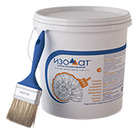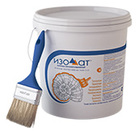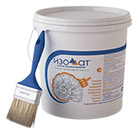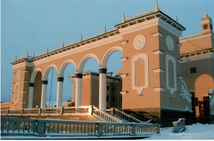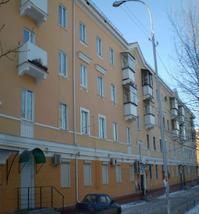Heat insulation of architectural monuments
When carrying out renovation (restoration) of facades of monuments and buildings with complex shapes that have great social significance, there is a need to preserve their unique architectural appearance. Conventional insulation materials are often unable to successfully solve this problem. Typically, these materials are thicker, make a structure heavier, and their assembly is very labor intensive and results in partial destruction of existing walls. Loose fit of slabs of expanded polystyrene or mineral (basalt) wool to the insulated surface leads to "cold bridges" and gradual destruction of a facade.
Using Isollat coating during reconstruction (restoration) of architectural monuments has several advantages:
- the material can be easily applied, which makes works fast;
- special thixotropic agents in the coating allow at one time applying 1 - 1.5 mm onto the working surface, which eliminates the need for carrying out works in several stages, with the obligatory drying of each layer to complete the polymerization process;
- coating has high adhesion, "sticks" well with all kinds of wall materials used in construction (brick, concrete, wood, natural stone);
- the coating is easily tinted;
- it lasts long - more than 10 years.
Preservation of original color of the facade is equally important during reconstruction, as a facade is under constant exposure to ultraviolet radiation and negative impact of urban environment: exhausts of cars, emissions of industrial enterprises. In this case, it is advisable to use Isollat-nano coating, which has effect of photocatalysis and self-cleaning from organic pollutants.

